Lolland,Denmark 作者: 来源: 发布时间:2021-09-28
一、人口,面积,所属地区
Population: 41,105
Area: 892 km²
Municipality in Sjælland
二、自然地理
Lolland municipality (on the island of Lolland) is a municipality in Region Sjælland in Denmark. The city hall and the seat of Lolland municipality is in Maribo while the largest town is Nakskov.
The municipalities of Lolland and Bornholm and the archipelago of Ertholmene northeast of Bornholm are the places in eastern Denmark that are located the farthest from the capital and largest city of Denmark, Copenhagen.
The municipality of Lolland conducts a number of nature and nature conservation projects, both in public and private areas.
The elbow at Nakskov Fjord is the 6-kilometer headland that borders the fjord to the west. The area contains 124 hectares of biologically rich meadows, overgrazing and dunes and a fantastic bird life.
The light-open habitats in Albuen depend on the vegetation being kept low by traditional operation with grazing animals, otherwise the area grows with high herbs, eaves and scrub and a large part of the bird life of the beach meadows with the many waders, terns and gulls, disappears and becomes poor in species. .
The elbow is one of the most important core areas of the international Natura 2000 area No 179 Nakskov Fjord and Indrefjord, and the improved operation is a crucial element in the realization of the Natura 2000 action plan. Total approx. 2.5 km of new fences have been set up in 2014 and 2015. Sheep and cattle go free in the large area, except for areas where houses and grounds are fenced off.
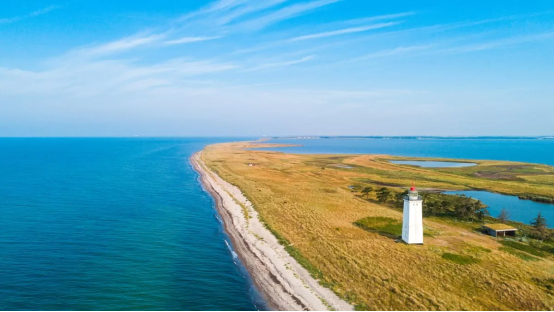
Transport
Although the transport to Copenhagen from Lolland can be undertaken by road and railway, Lolland from a point of view of transport can be seen as lying on a dead end - at least the western part. For most people having visited or visiting Germany on the other side of Fehmarn Belt, Lolland is just a drive-by place along the motorway route.
The railway passenger service in the municipality is operated by Regionstog, subsidized by the central government through Movia.
A ferry route connects Lolland with Langeland to the west.
The traffic corridor between Hamburg and Copenhagen is linked via car and train ferries sailing between Rødby and Puttgarden two times an hour. This ferry route will have competition from the Fehmarn Belt Fixed Link road and railway tunnel which is scheduled to open in 2024. The tunnel will be located in a corridor traversing Fehmarn Belt between a location (exits and entrances of the tunnel) east of the port of Rødbyhavn and a location (exits and entrances) east of the port of Puttgarden. When the tunnel is finished, Rødbyhavn will not have a train station. It will be located in Holeby instead, which is 10 kilometers inland. This is because the location of the tunnel changes the route of the railway and road in such a way that it will be impossible to relocate the train station from its present place to another place inside the town of Rødbyhavn itself.
三、经济发展和规模
The accounts for 2019 show a bottom line profit of DKK 54.1 million. and an operating profit of DKK 189.2 million. In 2019, a budget surplus of just under DKK 112 million was budgeted. The accounts therefore look really reasonable. In comparison, in 2018 there was an operating profit of DKK 118.5 million. kr.
Taxation in 2020
Municipal
tax : 27.0 per cent Church tax: 1.23 per cent
Basic tax profile: 33.09 per thousand
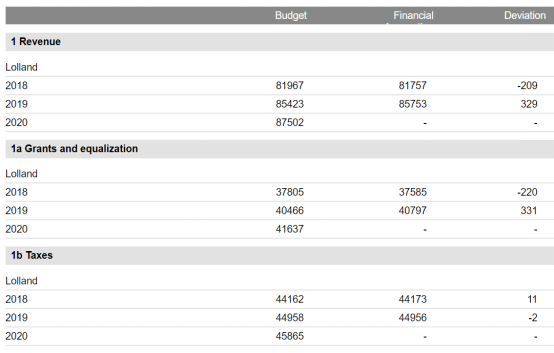
*All amounts are in DKK per. per capita in current prices.
四、产业特点、重点项目
Lolland municipality is a countryside municipality largely dependent on its agricultural industry featuring an open and intensively farmed landscape. The island has been renowned for its large sugar beet production. Despite the official vision of creating an ecologically sustainable economy agriculture is mainly conventional and focusing on cash crops like wheat, sugar beets, rapeseed and an intensive production. The sugar beets are refined in up to date processing facilities owned by Nordzucker in Nakskov, the main industrial center. Nordzucker also has a sugar processing factory in Nykøbing Falster in neighboring Guldborgsund Municipality.
The focus on green technologies has resulted in another landscape feature, the many windmills dotting the island.
The shipyard Nakskov Skibsværft founded in 1916 by East Asiatic Company's H. N. Andersen, who was born in Nakskov, was the largest single workplace in the area with 1,500 employees (1966:2,200 employees). It closed January 1, 1987. In the heavy industry other large industrial production sites within the municipality have concentrated their efforts on specialised parts of the production, design for instance, but all factory jobs - the majority of the jobs - have been lost, i.e. MAN B&W Diesel A/S (founded as Holeby Dieselmotorfabrik A/S in 1919) in Holeby. What remains is light industry. Among the manufactured products are: medical devices made of plastic, breakfast cereals for private label companies.
By 2030, Lolland is geographically and mentally spoken in the heart of the Fehmarn region. Enthusiastic people, talented companies and the will to Creating the good life are important characteristics of one a region that is neither metropolitan nor outskirts, but close to Europe. A Lolland who has seized the similarities, created sustainable growth and welfare and who succeeded in getting everyone involved. Tunnels the vision is opened and the vision of Lolland as the center-point between Denmark and Germany, between The North and Europe have become reality. Generations the pursuit of rations has been reached and the change, which the construction of the fixed link put intime, has only gotten stronger.
The Fehmarn connection and new opportunities for Lolland:
Sustainable growth and development when the Fehmarn connection is complete
Basis for tourism development
New companies for Maribo Business park
The good life on Lolland:
Good job opportunities
A housing market in balance
Urban and residential development
A cultural and leisure life that is versatile and contemporary
Growth and development:
A good framework for new and existing companies
Go ahead in the green transition
Develop a framework for the tourism industry
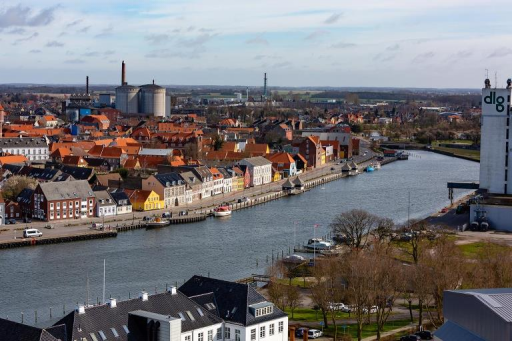
五、风景名胜,景点
Nature Park Maribosøerne
Address: Maribo Søndersø, 4930 Maribo
Maribosøerne, a unique conservation area, is situated in the middle of Lolland. From a national viewpoint, Maribosøerne is among our most outstanding natural areas, and because of the rich bird life, it is also a nature area of international importance. Nature Park Maribosøerne is the common name for the lakes: Søndersø, Røgbølle Lake, Hejrede Lake, Nørresø and the surrounding hinterland.
The four lakes are located in an area of magnificent manor houses, surrounded by fields, meadows, marsh and forest land, and give a real chance for bird and wildlife enthusiasts to experience some great sightings. The Nature Park has many ancient monuments, and a rich cultural history.
Maribosøerne is one of Denmark’s largest freshwater systems with a total of 1140 hectares of water surface. The largest of the lakes, and Denmark’s 8th largest lake, is Maribo Søndersø of 852 hectares. It consists of three pools, and with its 13 regular islands, 6 small islets and 3 marshy islands, is uniquely the Danish lake with most islands. Røgbølle Lake covers 200 hectares, Hejrede lake 50 hectares, and Nørresø 40 hectares.
It is a special experience to explore Nature Park Maribosøerne and all its little islands from the water. If you do not feel the urge to try a kayak or rowing boat, the tour boat ‘Anemonen’ sails the lakes every summer. The lakes are a protected wildlife sanctuary, and boating is only allowed in parts of Søndersø. Røgbølle Lake and Hejrede Lake are closed to the sailing public.
Lolland Municipality owns the islands Hestø, Fruerø and Præstø, and there is public access to the three islands. The other islands are private and owned by the Engestofte and Søholt estates . The largest of the islands is the 17-hectare island Borgø, which is the only island in Søndersø to have been inhabited in recent times. Many of the smaller islands are very important bird nesting sites.
Maribo Lakes Nature Park is known for its rich flora and fauna. The birdlife is especially unique. Many visit Maribosøerne to see ospreys or the impressive ‘Sea eagles’ (White tailed eagles), These birds are known to be discerning when choosing residence. The White-tailed eagle returned to Denmark at Maribosøerne as a breeding bird in 1995 after having been absent for 100 years, and it can now be seen in the area all year round, while the ospreys are there only between April and September.
There are many other interesting bird species in the area should the eagles fail to show. Masses of Greylag geese, Pochards and all four Danish species of grebes can be seen in the area. Grebes are found in all the Maribosøerne, and chances of observing some of these in the reed-beds are good.
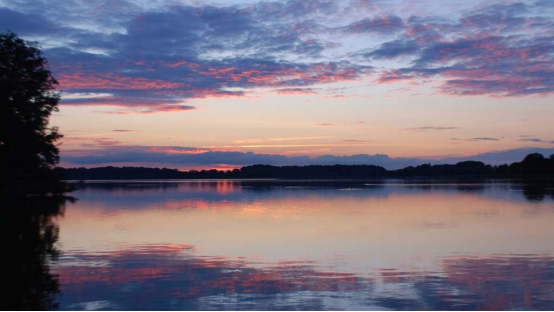
Dodecalith
Address: Kragenæsvej 62, 4943 Torrig L
The Dodecalith (Greek: The Twelve Stone) is a stone monument in Lolland. The art project consists of twelve menhirs carved in granite and each weighing 25-45 tons. Each menhir is 7-9 meters high, of which the uppermost 2 meters are sculpted as heads, all facing inwards towards the center of a circle approx. 40 meters in diameter. The Dodecalith is in “The Lolland Alps” on hills overlooking the Archipelago, the passage grave “Glentehøj” and three other burial mounds from the Bronze Age.
Between the figures are natural “sitting” stones from which spatial electro acoustic music specially created for the Dodecalith sounds every day of the year during daytime hours.
The art project consists of four elements: 1. History. 2. The stone figures. 3. The music. 4. The landscape.
Man has always chosen to live with music. At the Dodecalith, music sounds where nature and culture meet. In this area of designated natural beauty, the Dodecalith rises out of the landscape as a new landmark for Lolland. Here, stonemasonry and new specially composed electro acoustic music interact to signify local innovation.
The sculptor is Thomas Kadziola. The composer is Wayne Siegel.
Status Summer 2020 – 11 menhirs are raised in the circle – 6 of them carved with heads on the top.
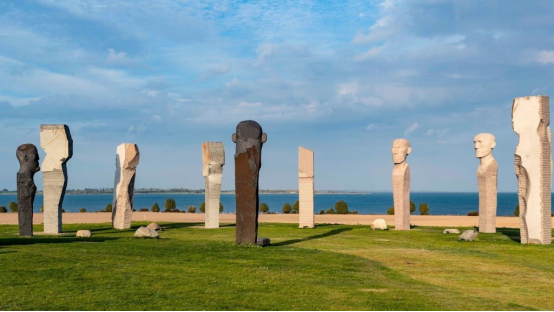
六、历史文化
On Monday 1 January 2007 Lolland municipality was created as the result of Kommunalreformen ("The Municipal Reform" of 2007), covering the former municipalities of Holeby, Højreby, Maribo, Nakskov, Ravnsborg, Rudbjerg and Rødby. The local politicians' original plan was to create two new municipalities: Maribo Kommune (Midtlolland: middle of the island:Holeby, Højreby, Maribo, Rødby) and: Nakskov Kommune (Vestlolland: western part of the island:Nakskov, Rudbjerg, Ravnsborg), but in a local referendum Wednesday 18 May 2005 it was decided by the voters to combine all of the 7 municipalities into one (the results were 51.6% for in Midtlolland and 54.6% for in Vestlolland). This is on a par with Sønderborg Municipality, which also is made up of 7 old municipalities, which is the highest among the new municipalities.
七、联系方式
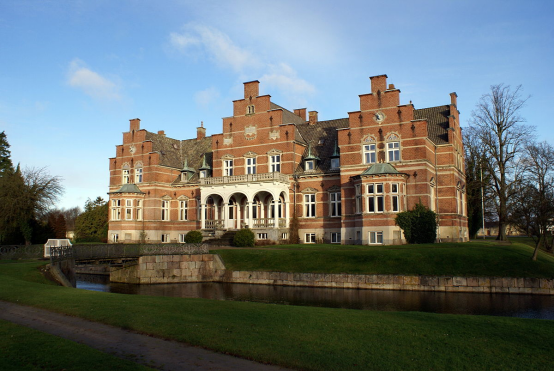
Mayor: Holger Schou Rasmussen
Address: Jernbanegade 7, 4930 Maribo
Telephone: 54 67 67 67
mail: lolland@lolland.dk
Facebook: https://www.facebook.com/lollandkommune
Website: https://www.lolland.dk/
Office Hours:
Monday - Wednesday: 8am - 3pm
Thursday: 8am - 5pm
Friday: 8 am - 1 pm
